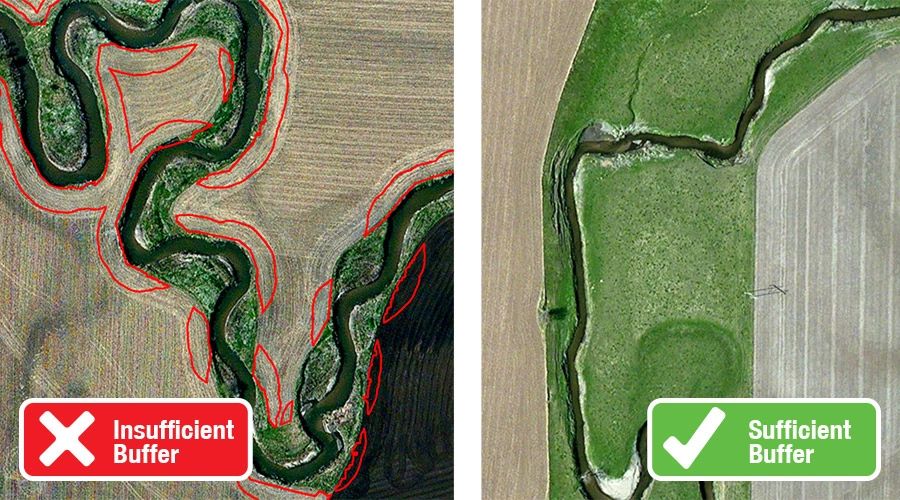
Does this apply to my land?
Buffers
In 2016, the Pipestone SWCD sent letters to landowners notifying them if they would be effected by the buffer law. A second letter and map was sent to those who were identified with areas of land that were in need of a buffer.
Buffer Information
Minnesota Buffer Law
Where are Buffers needed?
Alternative Practices
Minnesota's buffer law establishes new perennial vegetation buffers of up to 50 feet along lakes, rivers, and streams and buffers of 16.5 feet long ditches. These buffers will help filter out phosphorus, nitrogen, and sediment. The deadline for implementation for buffers on public waters was November 1, 2017. The deadline for public ditches was November 1, 2018. The law provides flexibility for landowners to install alternative practices with equivalent water quality benefits that are based on the Natural Resource Conservation Service Field Office Technical Guide.
Alternative Practices
Where are Buffers needed?
Alternative Practices
Conservation buffers are best described as strips or other areas of land in permanent vegetation that help control pollutants and manage other environmental concerns. Filter strips, riparian buffers (predominantly trees and shrubs next to water courses), field boarders, grassed waterways, field windbreaks, and contour grass strips are all examples of conservation buffers.
Where are Buffers needed?
Where are Buffers needed?
Where can farmers find assistance?
Buffers are needed:
- Along streams, lakes, ponds, and wetlands
- Next to roads and driveways
- Along parking lots
- Along and in agricultural fields
- Around residential and commercial property
- Any other area that can serve to filter runoff and pollutants before they reach a water body
Where can farmers find assistance?
Pipestone SWCD Monitoring and Compliance Plan
Where can farmers find assistance?
Farmers may find information related to installing and funding buffer strips by contacting our office. Nicole from the Soil and Water Conservation District is here to assist landowners and operators! If you find yourself needing answers to your questions please give Nicole a call or stop by our office.
Information about funding through the Conservation Reserve Program (CRP) is available from the Natural Resources Conservation Service (NRCS) website: www.nrcs.usda.gov.
For more information on drainage ditch buffers, see the Board of Water and Soil Resources website.
How do Buffers help?
Pipestone SWCD Monitoring and Compliance Plan
Pipestone SWCD Monitoring and Compliance Plan
Buffers help by:
- Slow water runoff
- Trap sediment and dust
- Trap fertilizers and pesticides
- Protect wildlife and livestock from harsh weather
- Reduce winds, noise and odors
- Provide food, nesting cover and shelter for many wildlife species
- Increase privacy and beautify the countryside
Pipestone SWCD Monitoring and Compliance Plan
Pipestone SWCD Monitoring and Compliance Plan
Pipestone SWCD Monitoring and Compliance Plan
To ensure riparian protections continue to exist, compliance tracking of all parcels in Pipestone County subject to the Buffer Law will be monitored at least once every three years starting November 2, 2018 and upon release of new, update, aerial imagery. Means of compliance tracking may include, but is not limited to: use of available imagery sources, field visits, etc...
Click on the link above to learn more about where the DNR is at with creating the Official State Buffer Map.
At any point in time, the SWCD may complete compliance spot checks at random and for any reason, conduct field review, handle complaints whenever necessary, and issue a validation of compliance if requested.
